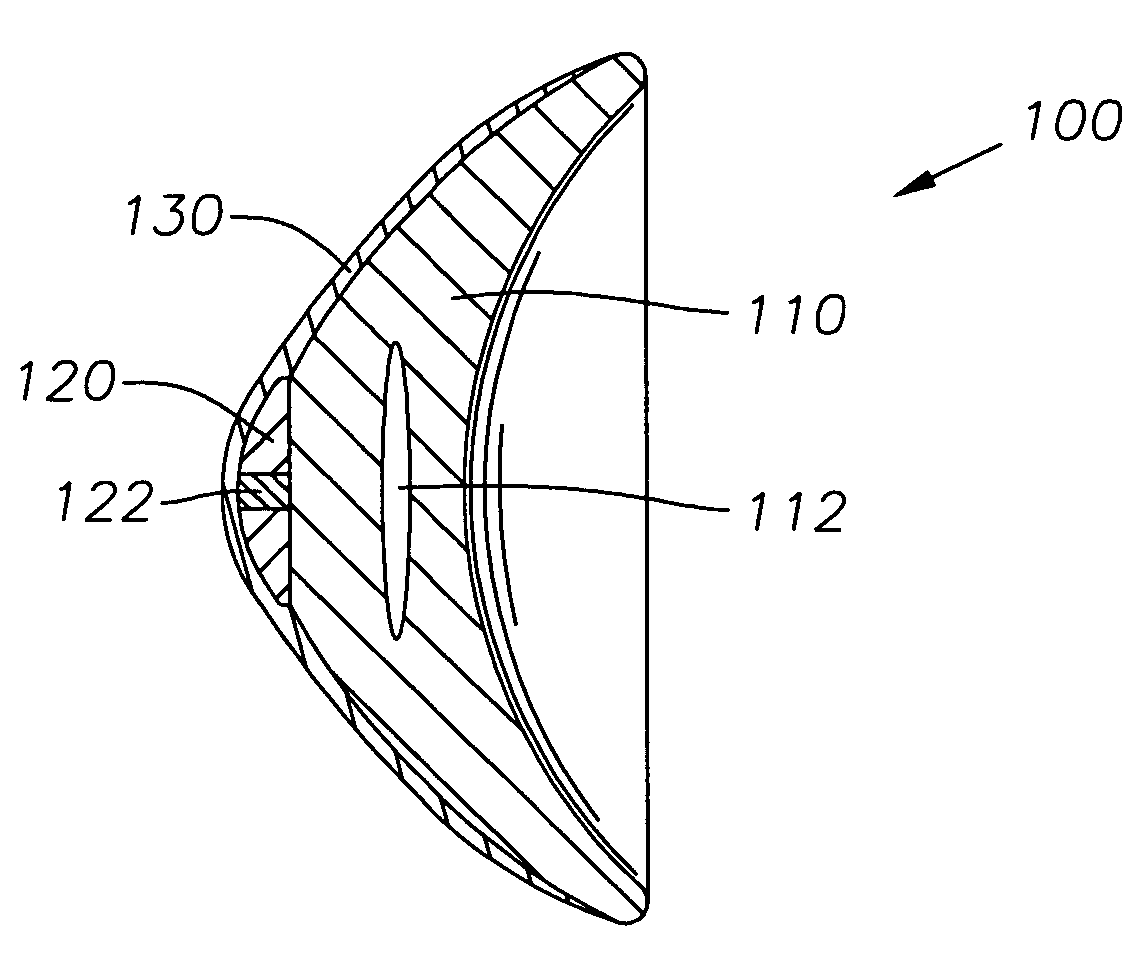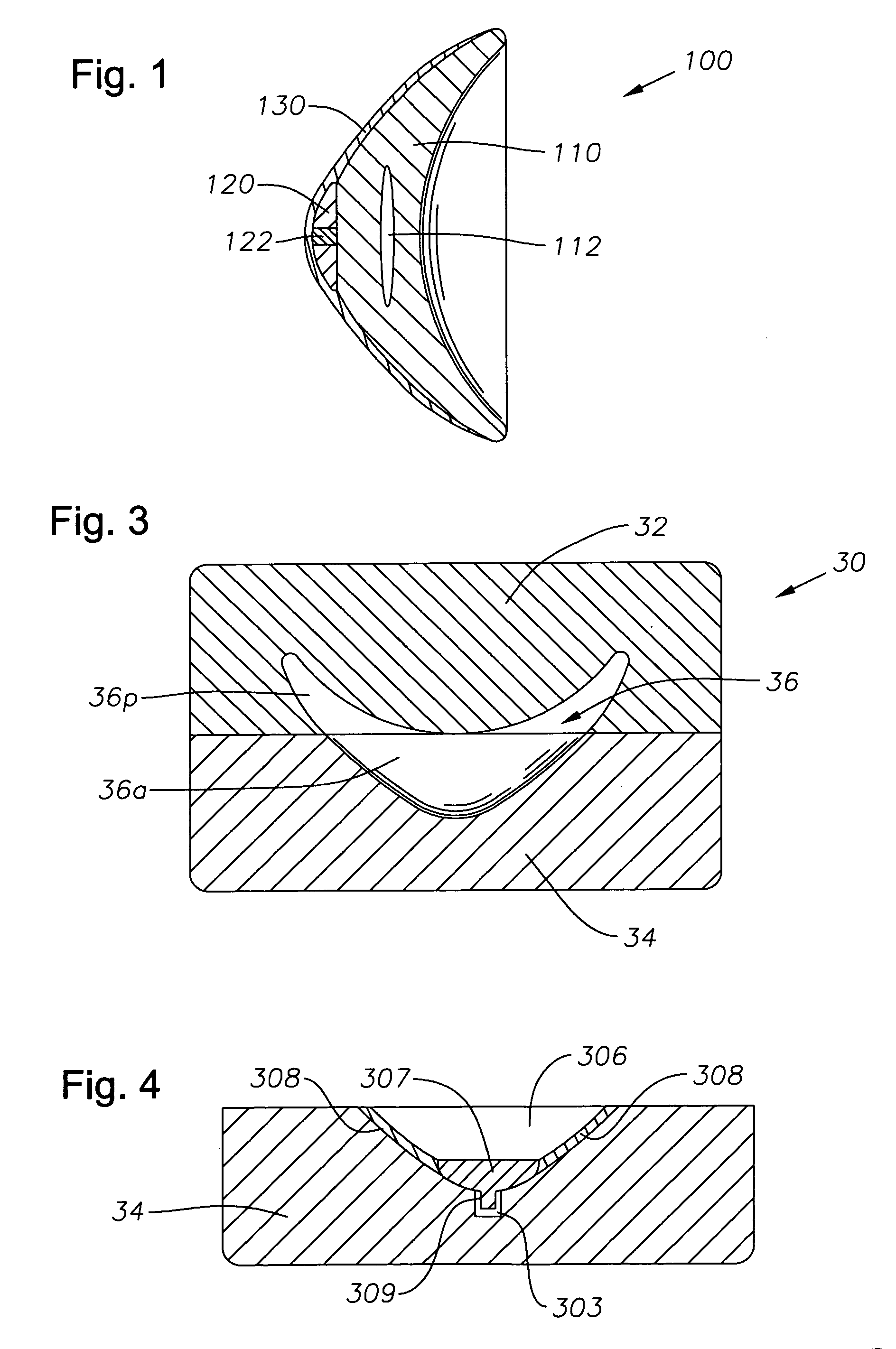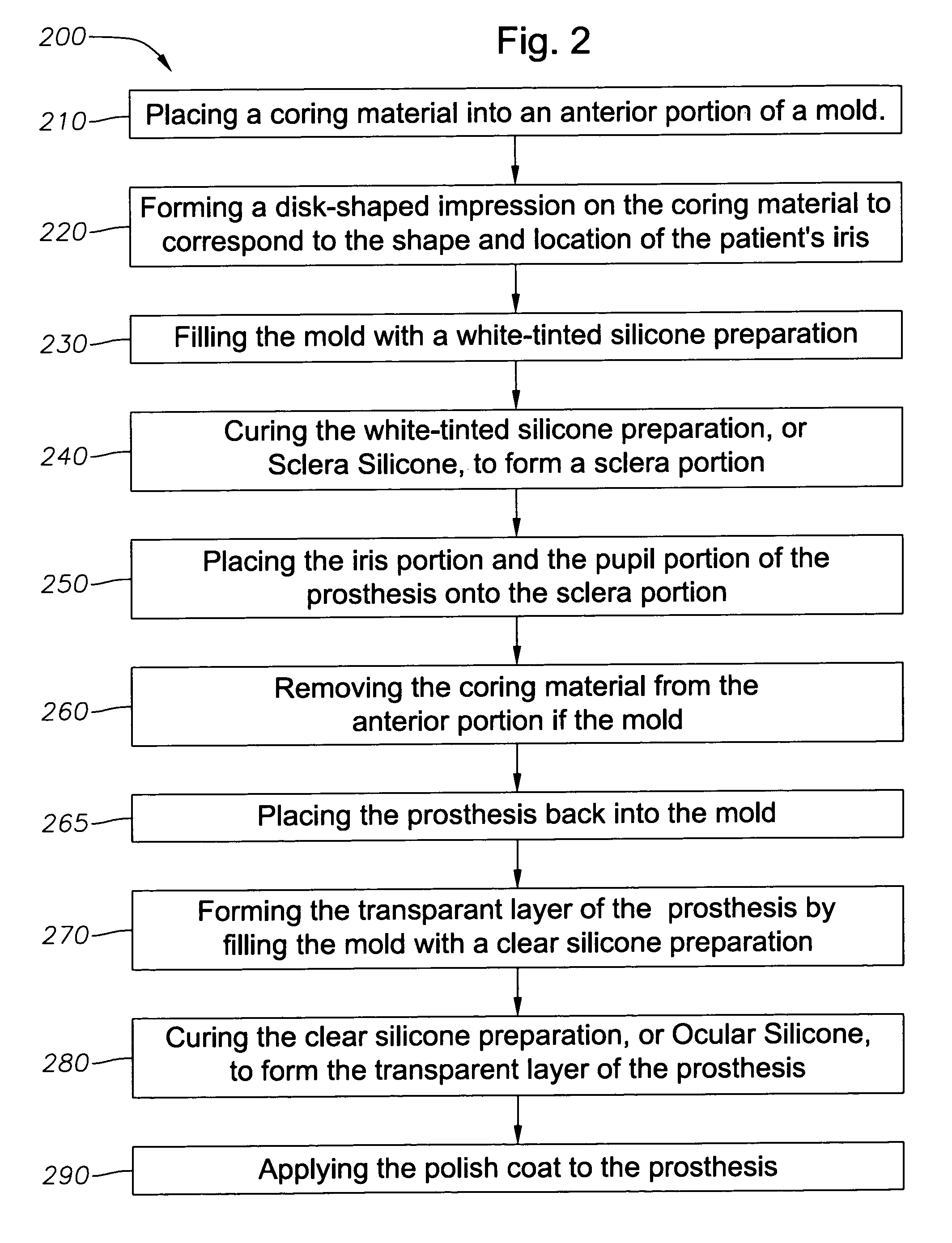Silicone based ocular prosthesis, and method for making same
a technology of ocular prosthesis and silicone, which is applied in the field of ocular prosthesis, can solve the problems of loss of a person's natural eye, pmma paint and the toxicity of methymethacrylate monomers to the human body, and the replacement eye may not conform to the true shape of the patient's eye sock
- Summary
- Abstract
- Description
- Claims
- Application Information
AI Technical Summary
Benefits of technology
Problems solved by technology
Method used
Image
Examples
Embodiment Construction
[0034]The present invention provides a method for making an ocular prosthesis in which the prosthesis is fabricated from a non-toxic, biocompatible, silicone material. Prosthesis- or medical grade silicone is used as a base for the ocular prosthesis. The silicone material offers a soft and flexible alternative to known hardened ocular prostheses, and avoids certain shortcomings of the PMMA-based devices. For example, it is believed that an ocular prosthesis fabricated from medical grade silicone materials is not as porous and so does not host microorganisms that might be harmful to the patient's surrounding ocular tissue. It is also believed that the fabrication methods of the present invention are faster than methods of making PMMA based ocular prosthesis due, in one aspect, to faster curing times.
[0035]FIG. 1 presents a side, cross-sectional view of an ocular prosthesis 100 of the present invention, in one embodiment. The illustrative prosthesis 100 is intended to serve aesthetica...
PUM
| Property | Measurement | Unit |
|---|---|---|
| white- | aaaaa | aaaaa |
| transparent | aaaaa | aaaaa |
| surface area | aaaaa | aaaaa |
Abstract
Description
Claims
Application Information
 Login to View More
Login to View More - R&D
- Intellectual Property
- Life Sciences
- Materials
- Tech Scout
- Unparalleled Data Quality
- Higher Quality Content
- 60% Fewer Hallucinations
Browse by: Latest US Patents, China's latest patents, Technical Efficacy Thesaurus, Application Domain, Technology Topic, Popular Technical Reports.
© 2025 PatSnap. All rights reserved.Legal|Privacy policy|Modern Slavery Act Transparency Statement|Sitemap|About US| Contact US: help@patsnap.com



